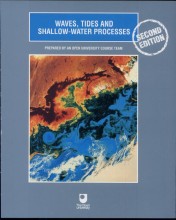Beaches - The morphology of beaches
6 important questions on Beaches - The morphology of beaches
Where does the beach width depend on?
Which three zones of wave action can generally be identified and what does it mean?
2. Surf zone: generated by the breaking waves.
3. Swash zone: where the smaller waves are
What are the two extreme beaches?
2. Steep beach with narrow intertidal zone and berms.
- Higher grades + faster learning
- Never study anything twice
- 100% sure, 100% understanding
What can happen during high tide when you walk down to the sea in shallow sloping beaches?
Ridge-and-runnel zones are formed by sediment movement in the surf and swash zones.
What can happen due to seasonal variations in sediment transport?
What are edge waves?
The question on the page originate from the summary of the following study material:
- A unique study and practice tool
- Never study anything twice again
- Get the grades you hope for
- 100% sure, 100% understanding
































